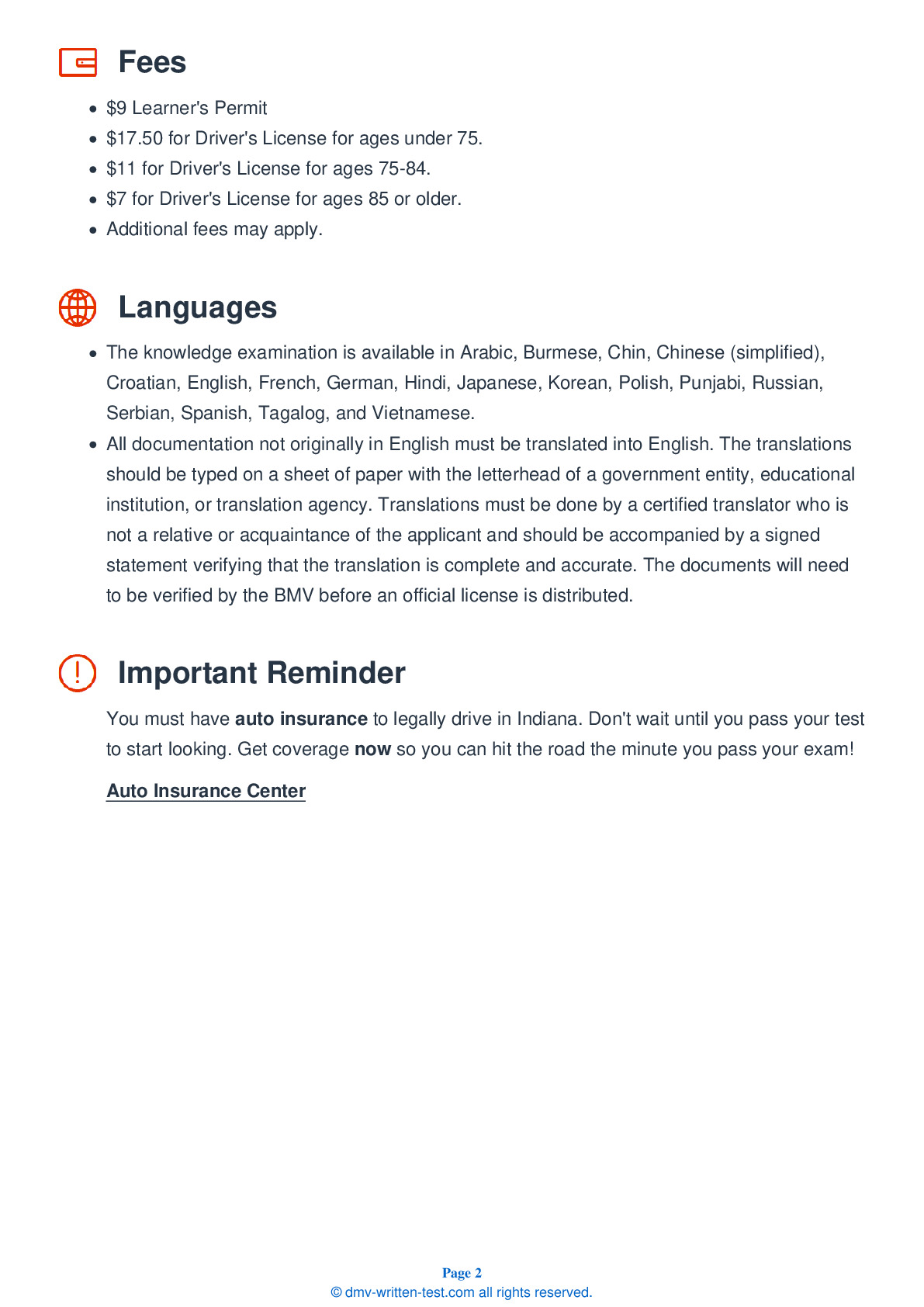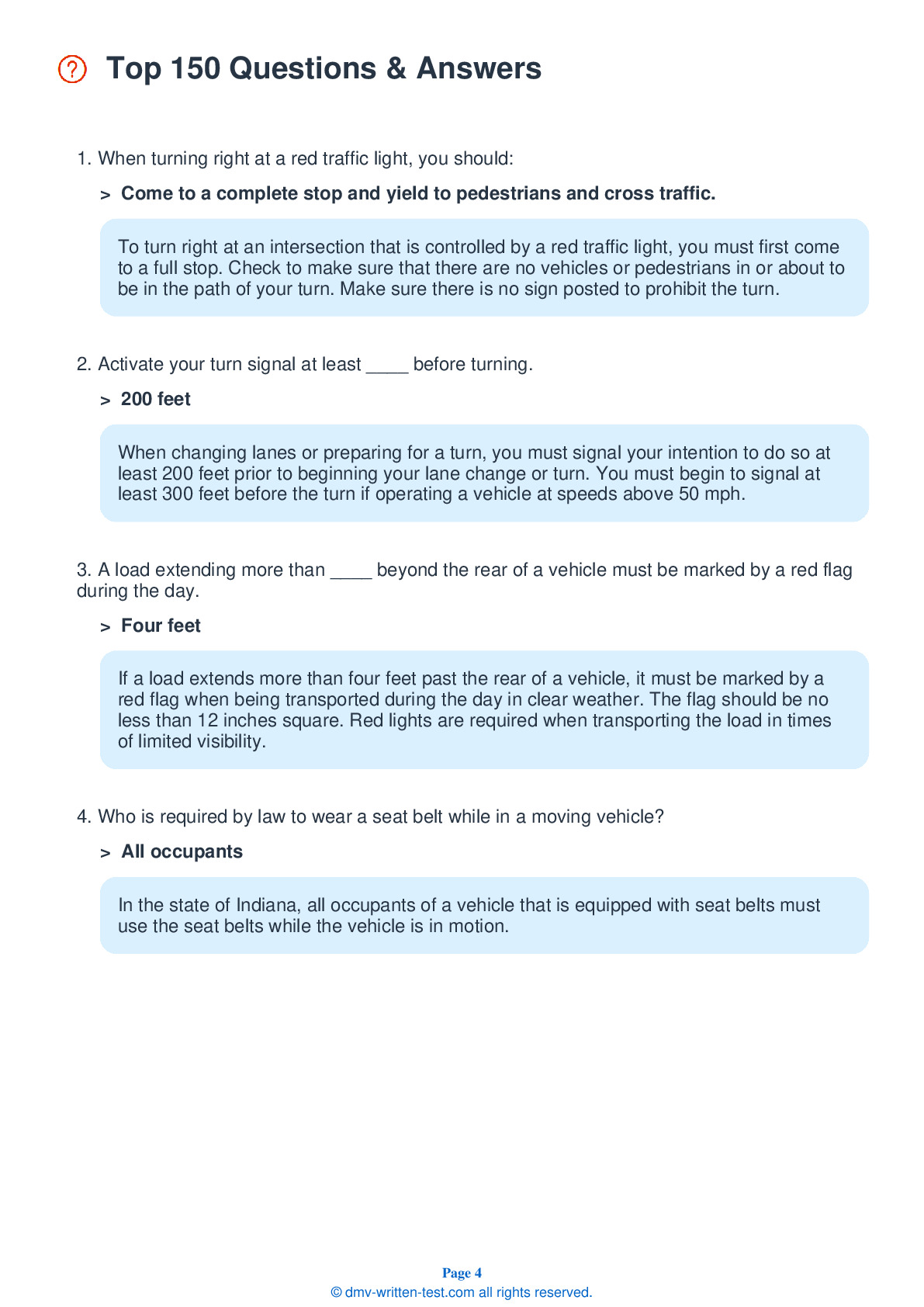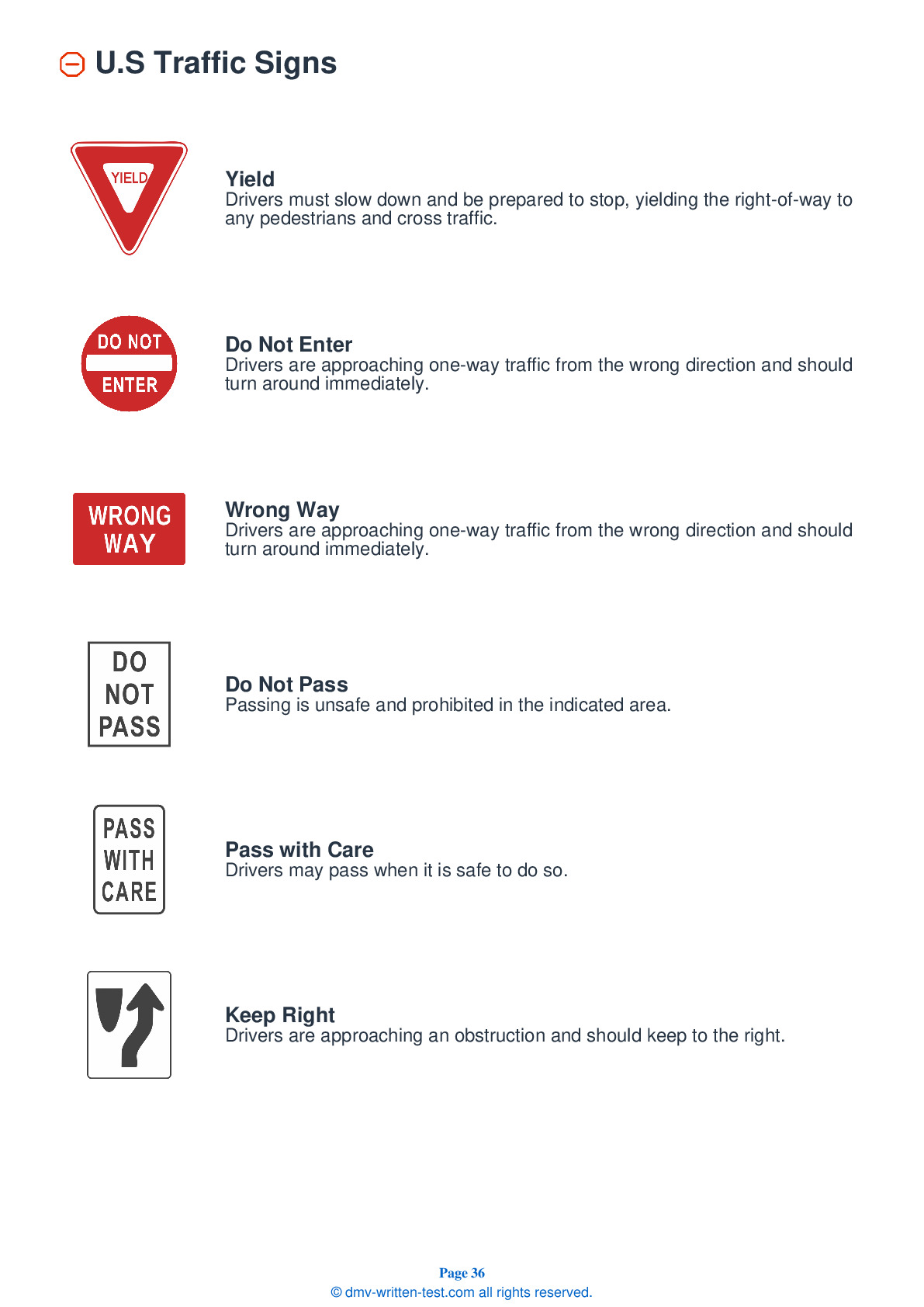2025 Indiana Permit Test 7
The following questions are from real DMV written tests. These are some of the actual permit questions you will face in Indiana. Each permit practice test question has three answer choices. Select one answer for each question and select "grade this section." You can find this button at the bottom of the drivers license quiz. For a complete list of questions and answers for Indiana please visit https://cheat-sheets.dmv-written-test.com/en/indiana/car.
Number of Tests
Number of Question
Passing Score
9. Larger vehicles have:
Explanation
The larger the vehicle, the larger the blind spots. Large trucks and SUVs have spots close to their rears that cannot be seen in their side or rearview mirrors.
10. When in a travel lane on the roadway:
Explanation
You should not stop in a travel lane for any reason. Instead, keep moving until you can safely pull off of the road. If you miss your turn or exit, do not back up. Go to the next turn or exit or where you can safely turn around.
11. When parking your vehicle downhill on a two-way street:
Explanation
When you park on a downward-facing slope, turn your wheels sharply toward the side of the road. This way, if your vehicle starts to roll downhill, it will roll away from traffic.
12. This sign means:
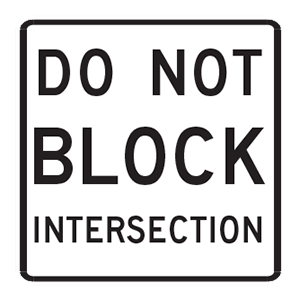
Explanation
Regulation signs regulate traffic speed and movement, displaying rules which drivers must obey. This regulation sign will be posted near an intersection that drivers should be careful not to block.
13. Do not pass:
Explanation
You should never pass if there is an oncoming vehicle in the passing lane, if your view is blocked by a curve or hill, at an intersection, before or on a railroad crossing or bridge, or in any other no passing zone. Unless you are on the opposite side of a multilane roadway with a median or shared center turn lane, you may not pass a stopped school bus that has its flashing red lights activated.
14. When dealing with pedestrians, a driver must:
Explanation
You must do everything you can to prevent striking a pedestrian or another vehicle, regardless of the circumstances. It is the driver’s basic responsibility to be alert to pedestrians and to yield the right-of-way to all pedestrians, even if the pedestrian is crossing the street where they should not be.
15. Blood alcohol content (BAC) depends on each of the following, except:
Explanation
Your blood alcohol content (BAC) depends on how much alcohol you drink, how much time passes between drinks, and your weight. It is not affected by the type of alcoholic beverages you drink, your level of physical fitness, or how well you can "hold your liquor."
16. This sign means:
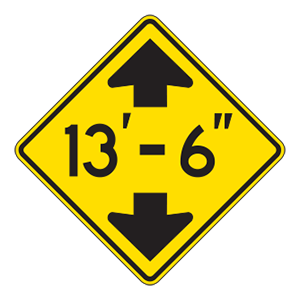
Explanation

